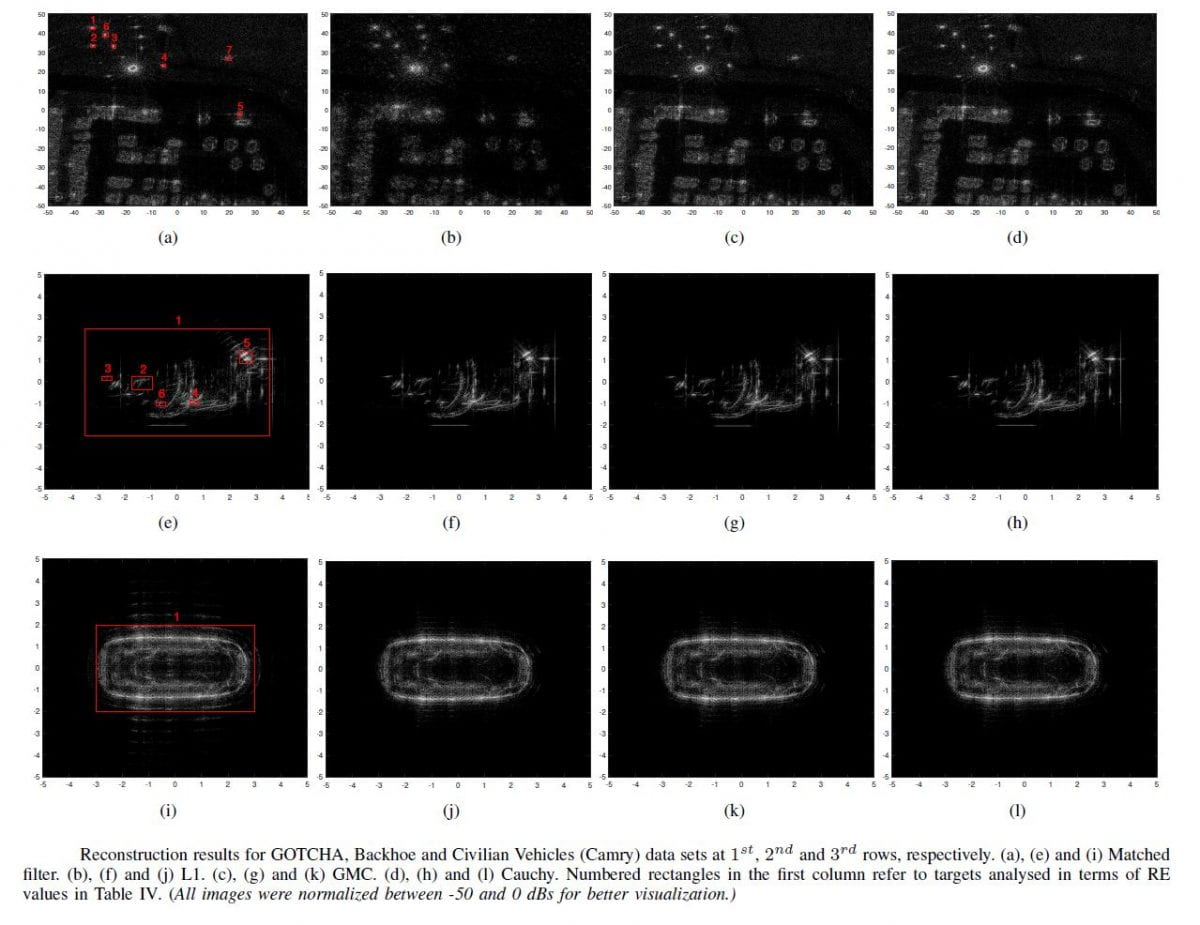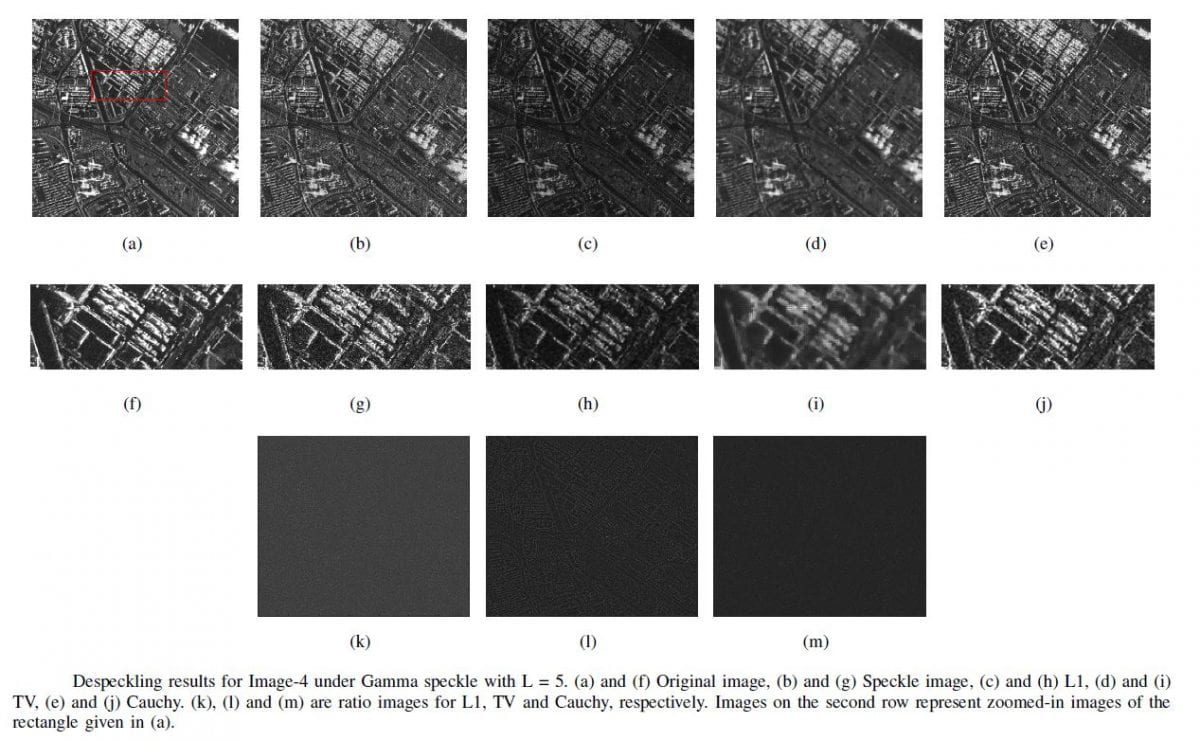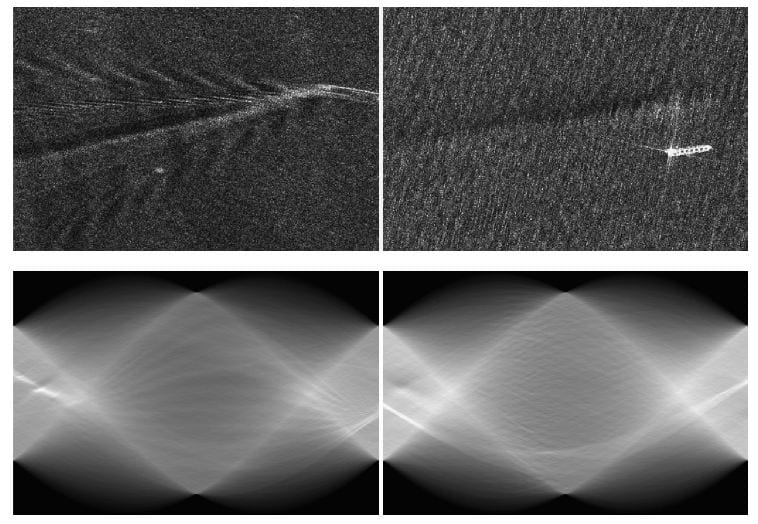
Ship wake detection is essential for extracting information on the wake generating vessels in order to analyse synthetic aperture radar (SAR) images of the sea surface. One possibility is to assume a linear model for wakes, in which case detection approaches are based on transforms such as Radon and Hough. These express the bright (dark) lines as peak (trough) points in the transform domain.
In this project, ship wake detection is posed as an inverse problem, which the associated cost function has taken various forms, such as
** Generalized minimax concave (GMC) function [1,2],
** Non-convex Cauchy-based penalty function [3,4],
** Hybrid penalty function which combines the Cauchy-based penalty with a 2-D DWT based term [5].
Despite having a non-convex regularizer, we provide mathematically consistent solutions, by either
** keeping the overall cost function to be convex [1,2], OR
** setting model parameters to guarantee the convergence [3-5].
To quantify the performance of the proposed methods, various types of SAR images are used, corresponding to TerraSAR-X, COSMO-SkyMed, Sentinel-1, and ALOS2. The performance of various priors in solving the proposed inverse problem is first studied by investigating the GMC along with the L1, Lp, nuclear and total variation (TV) norms.
Algorithm
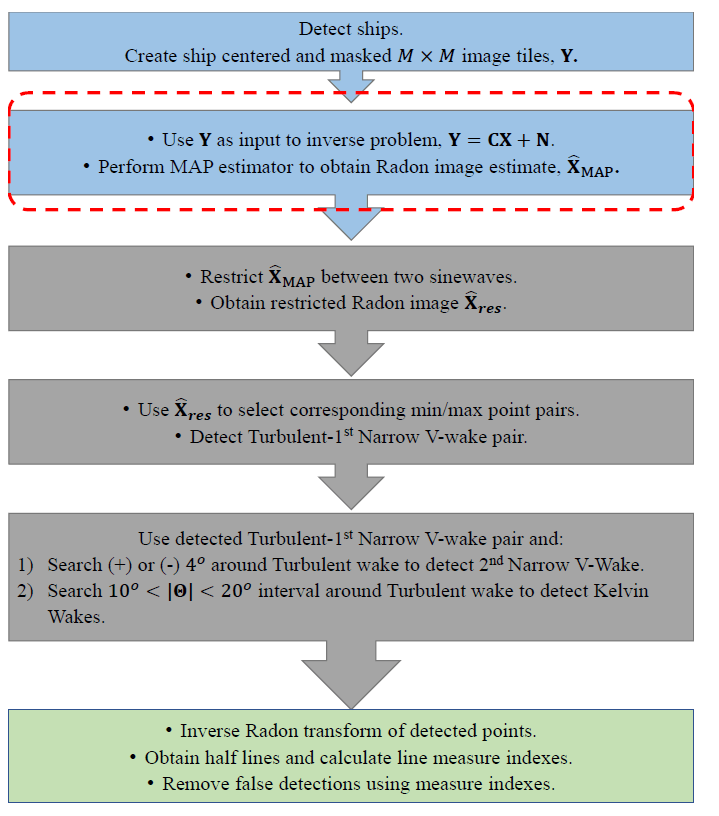
Example Results
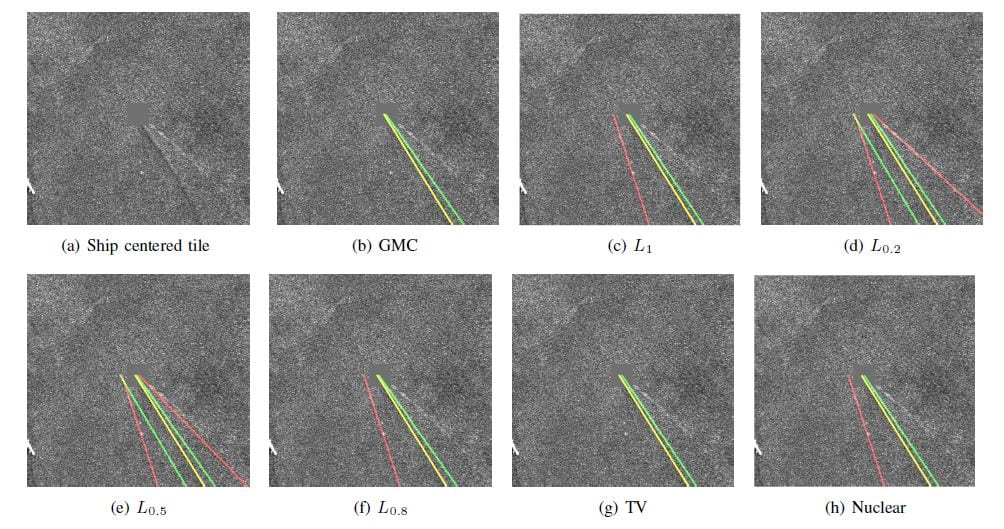

Further information
[1] Karakuş, O., & Achim, A. (2019, May). Ship wake detection in X-band SAR images using sparse GMC regularization. In ICASSP 2019-2019 IEEE International Conference on Acoustics, Speech and Signal Processing (ICASSP) (pp. 2182-2186). IEEE.
[2] Karakuş, O., Rizaev, I., & Achim, A. (2019). Ship Wake Detection in SAR Images via Sparse Regularization. IEEE Transactions on Geoscience and Remote Sensing, 58(3), 1665-1677.
[3] Yang, T., Karakuş, O., & Achim, A. (2020, October). Detection of ship wakes in SAR imagery using Cauchy regularisation. In 2020 IEEE International Conference on Image Processing (ICIP) (pp. 3473-3477). IEEE.
[4] Karakuş, O., & Achim, A. (2020). On solving SAR imaging inverse problems using nonconvex regularization with a Cauchy-based penalty. IEEE Transactions on Geoscience and Remote Sensing.
[5] Ma, W., Achim, A., & Karakuş, O. (2020). Exploiting the Dual-Tree Complex Wavelet Transform for Ship Wake Detection in SAR Imagery. arXiv preprint arXiv:2012.06663.
Contact
Oktay Karakuş, Tianqi Yang, Wanli Ma, Igor Rizaev, Alin Achim
Code
O Karakus, and A Achim. (2020): “AssenSAR Wake Detector.”
https://doi.org/10.5523/bris.f2q4t5pqlix62sv5ntvq51yjy
Funding
This work was supported by the UK Engineering and Physical Sciences Research Council (EPSRC) under grant EP/R009260/1 (AssenSAR).



